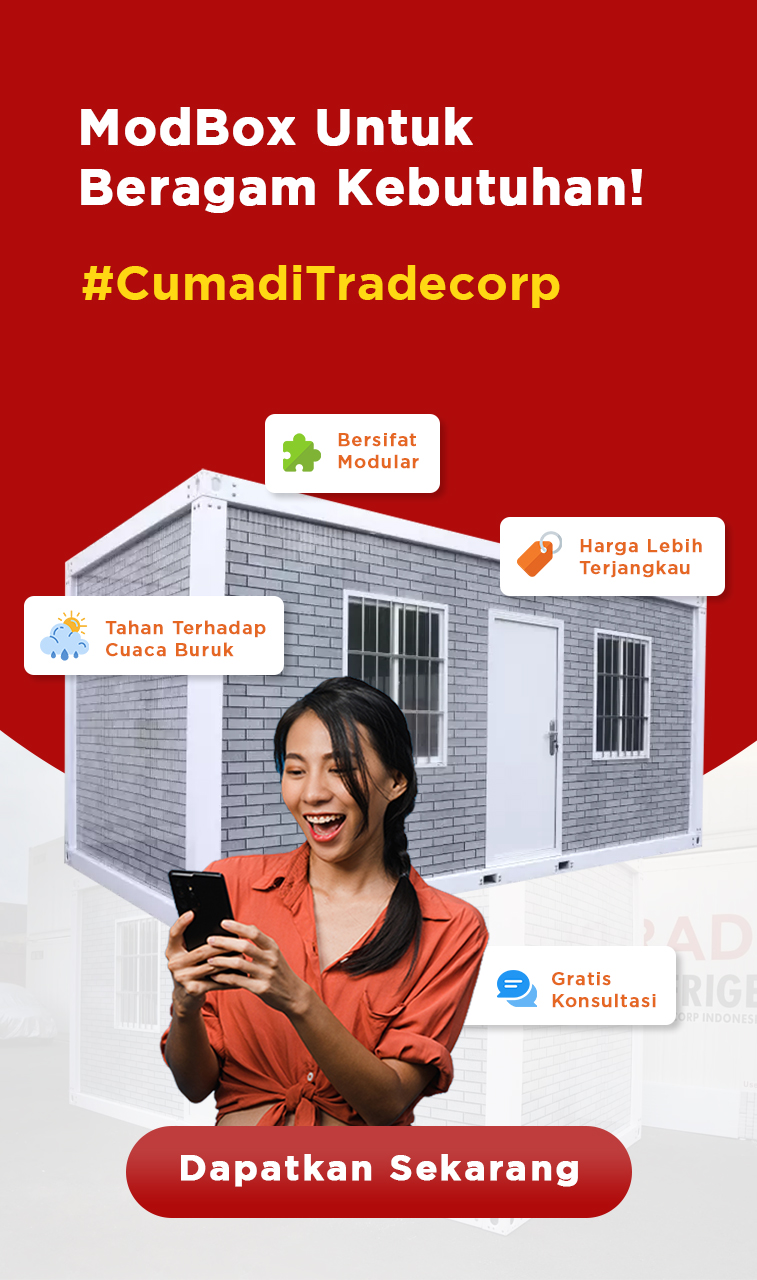A minimalist semi-permanent house built with a prefabricated modular concept offers a much faster construction timeline compared to conventional buildings, which often take several months to complete. In addition to speed, modular buildings also offer long service life that can reach more than 20 years with proper maintenance.
If you are planning to build a minimalist semi permanent house soon, these advantages make modular prefabricated construction a strong option to consider. Tradecorp’s ModHouse can be one of the best choices for a minimalist semi permanent house.
Why ModHouse? ModHouse is designed with an expandable concept. The installation process is completed by pulling or unfolding the building’s side sections and locking them in place. This installation method shortens the construction time and makes delivery to the project site more efficient. As a modular unit, ModHouse uses a semi knock down assembly system, and its on site installation can be completed in less than one day for a single unit.
In terms of structure, ModHouse uses a corrosion resistant steel frame combined with insulated sandwich panels for the walls and exterior surfaces. The steel frame provides stability and strength. The insulation materials, such as EPS or rockwool, help maintain a stable room temperature and reduce noise from outside.
As a residential unit, ModHouse includes 2 bedrooms, 1 bathroom, a living room, and a kitchen. For more detailed information about ModHouse, you can contact Tradecorp by filling out the online form available on website https://kontainerindonesia.co.id/en/. Our team will reach out so you can consult directly and request a price estimate.
Tradecorp, the supplier of ModHouse, is an international company that has supported business operations and field projects since 2014 by providing shipping containers, offshore DNV containers, ISO tank containers, modified containers, modular prefabricated buildings, and RapidFrame construction.
Still curious about modular concept designs for a minimalist semi permanent house? Explore more in the sections below.
Best Modular Building for Minimalist Semi-Permanent House
Examples of Minimalist Semi-Permanent House Designs with a Modular Concept
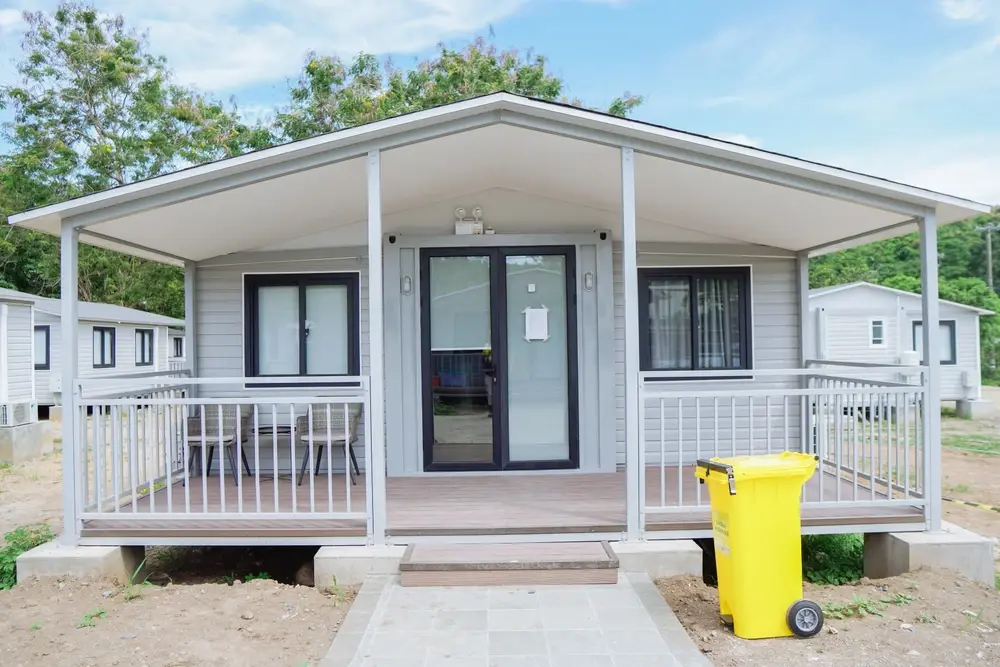
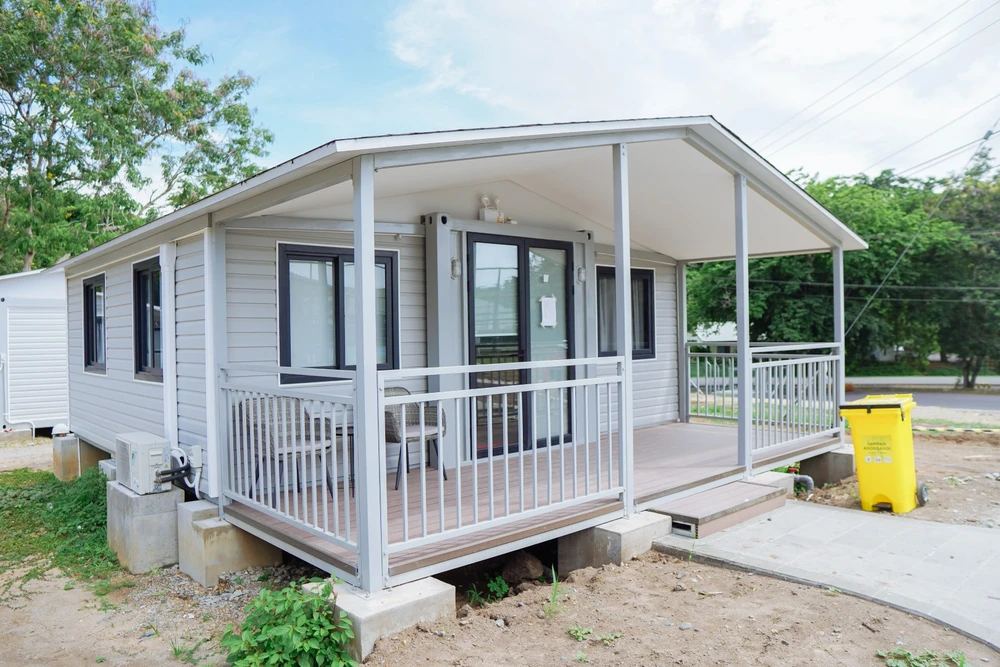
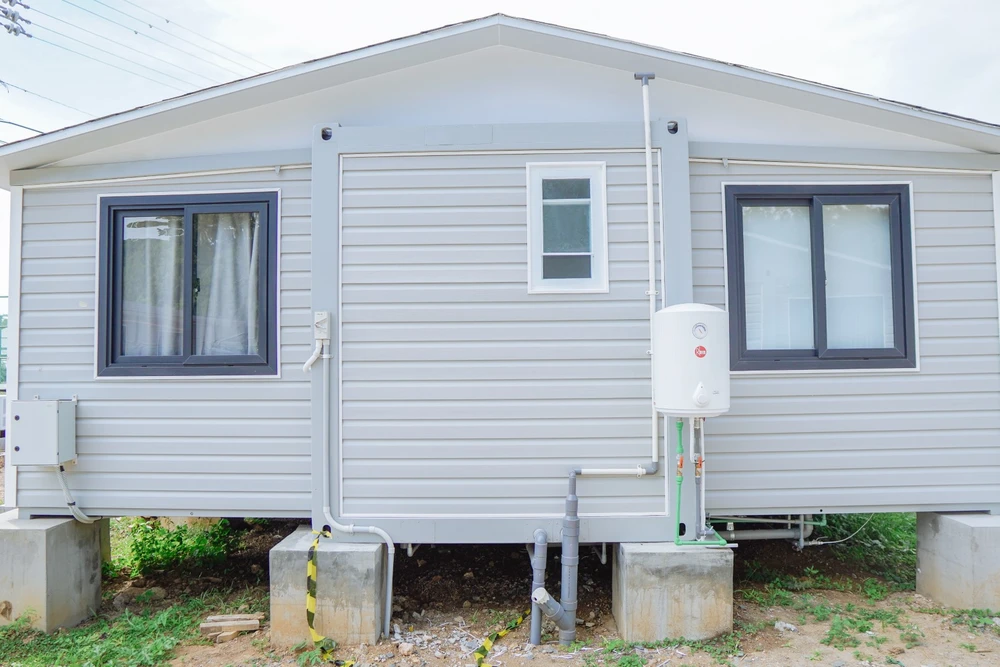

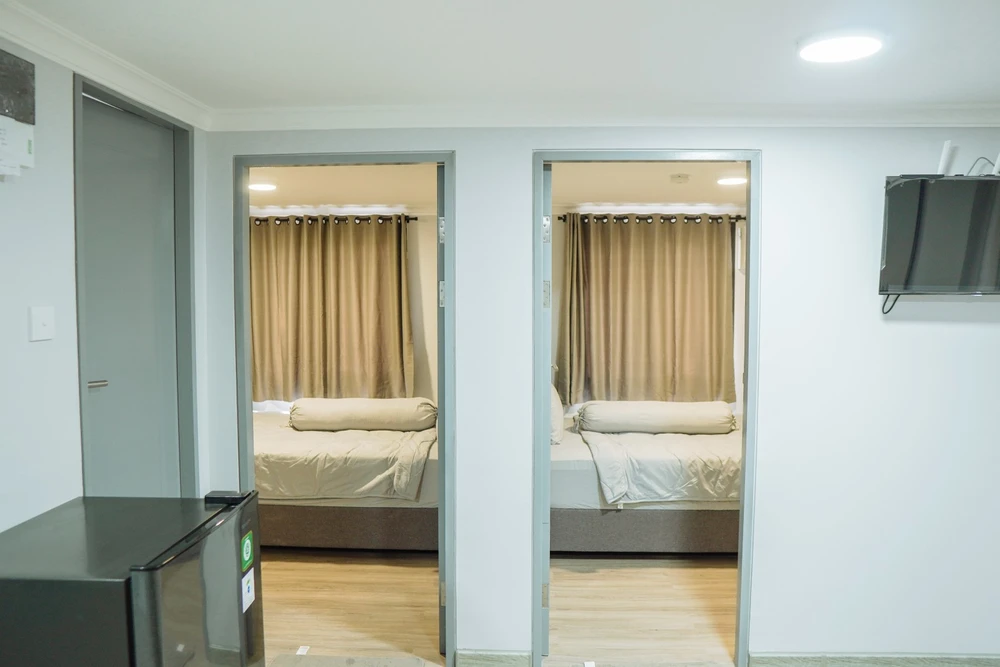
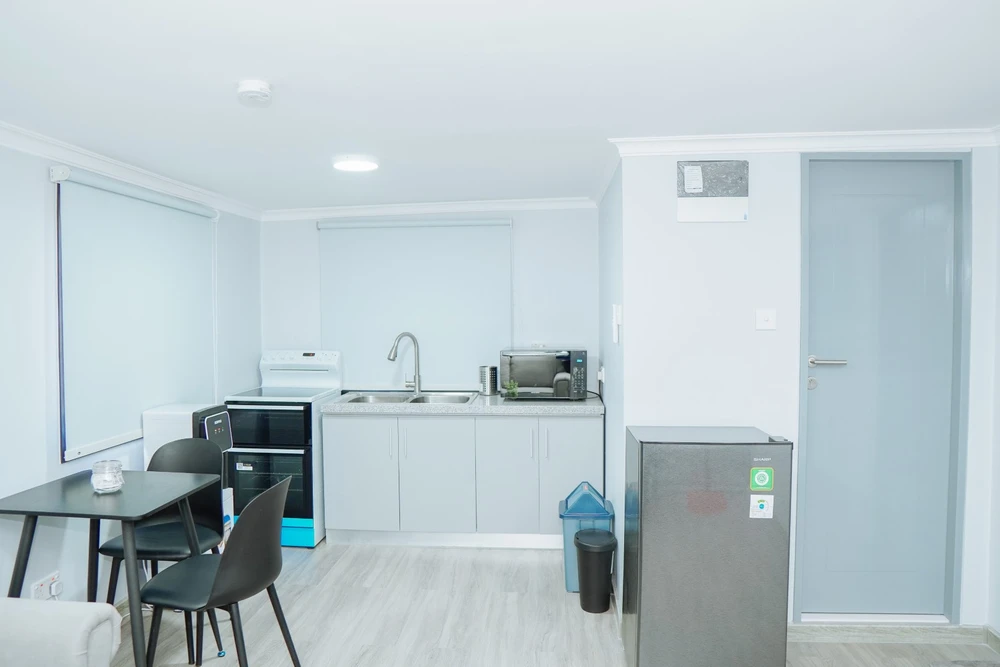
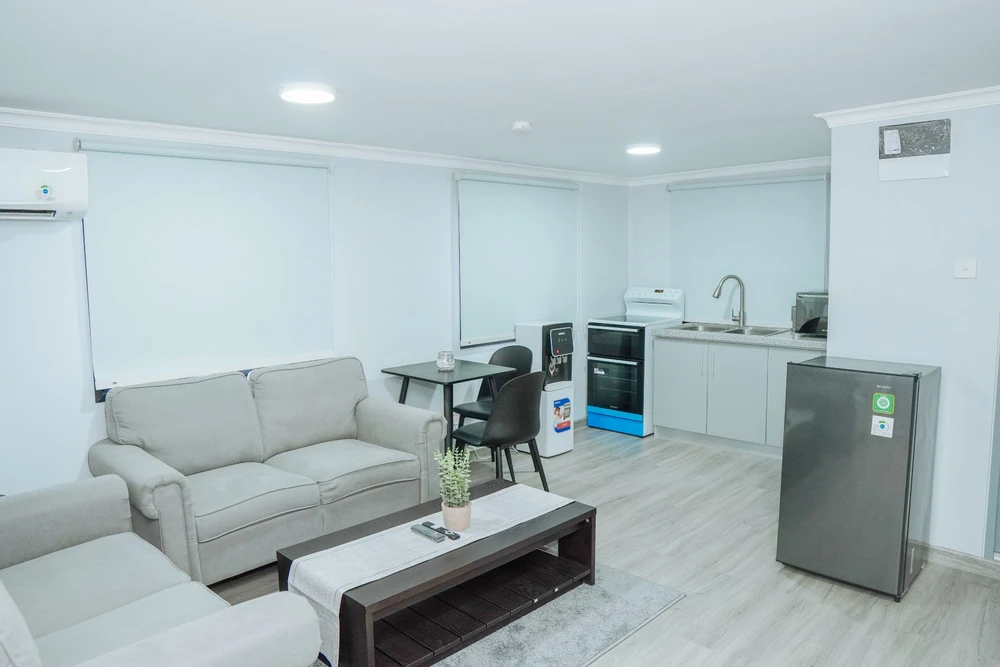
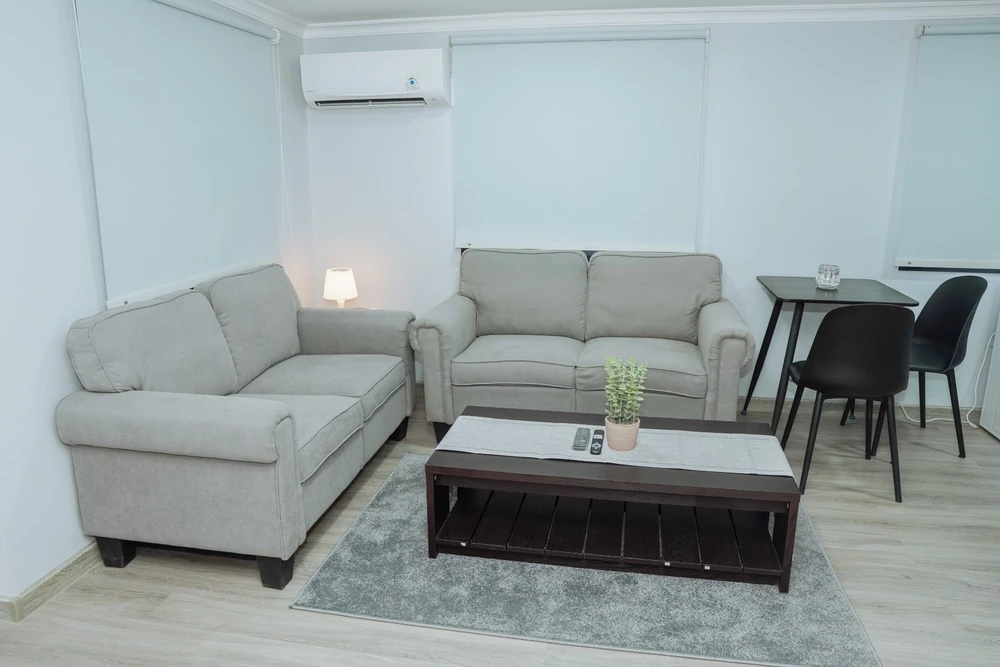
Specifications of Modular Buildings and Their Materials
|
Specification |
Description |
| Bedrooms | 2 Rooms |
| Bathroom | 1 Room |
| Kitchen | 1 Room |
| Living / Family Room | 1 Room |
| Length | 6,300 mm |
| Width | 5,850 mm |
| Height | 2,500 mm |
| Building Structure | Stainless steel frame with sandwich panels |
| Wall | Sandwich panel |
| Partition Wall | Sandwich panel |
| Floor | SPC vinyl |
Best Modular Building for Minimalist Semi-Permanent House
Comparison Between Modular Houses and Conventional Houses
|
Modular House |
Conventional House |
| Its components are produced in a factory under strict quality control and then assembled on site, allowing the process to be much faster. On site installation is minimally affected by weather conditions and can significantly shorten the construction timeline compared to traditional methods. | The entire construction process is carried out on site, making it highly dependent on weather, land conditions, and labor availability. Construction time tends to be longer. |
| More cost efficient because material usage is measured and controlled, construction waste is reduced, and labor requirements are lower. The shorter construction period also helps reduce project financing costs. | Higher costs due to fluctuating labor expenses and the potential for budget overruns caused by unpredictable site conditions. Material waste is generally higher. |
| Factory production provides consistent and measurable quality control. The risk of installation errors is lower because fabrication follows standardized production procedures. | Quality depends heavily on the skills of on site workers. Variations in workmanship can occur, especially on long term projects. |
| Barely affected by weather because most of the construction process takes place inside a factory. | Strongly affected by weather conditions. Heavy rain or extreme heat can delay the construction process. |
| Produces less construction waste and uses materials more efficiently due to controlled manufacturing systems. | Generates more material waste because cutting and fabrication on site are not as efficient as factory processes. |


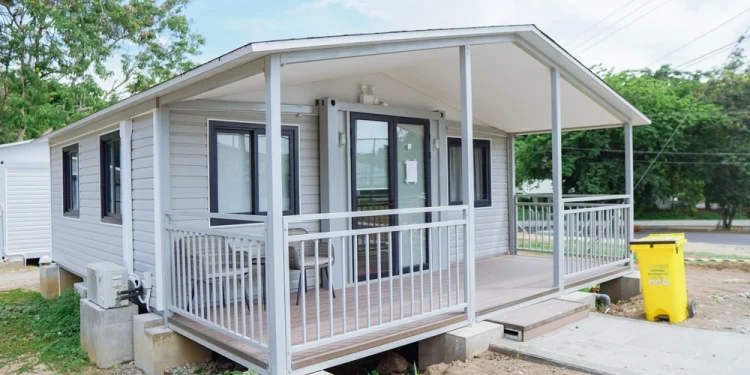
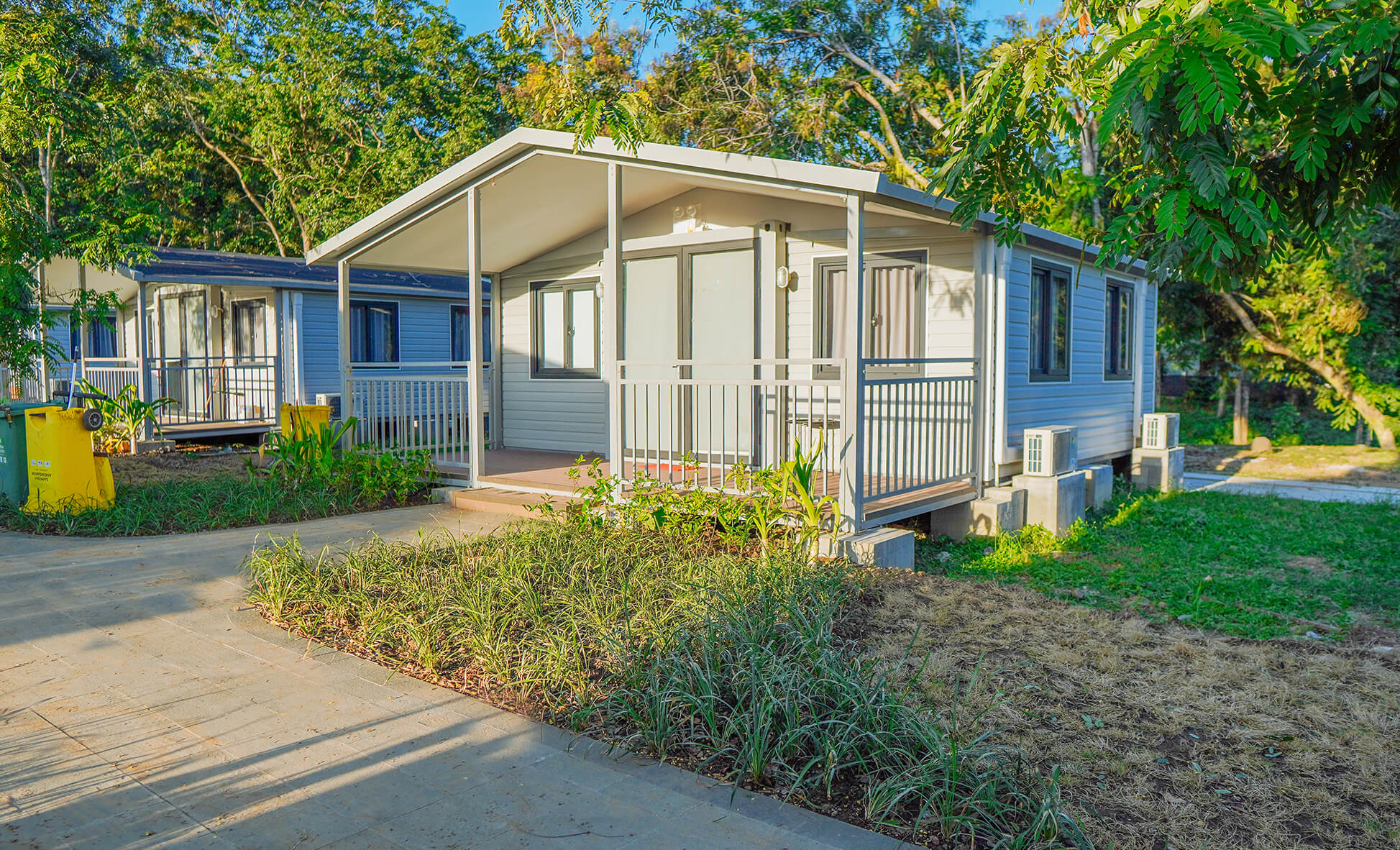
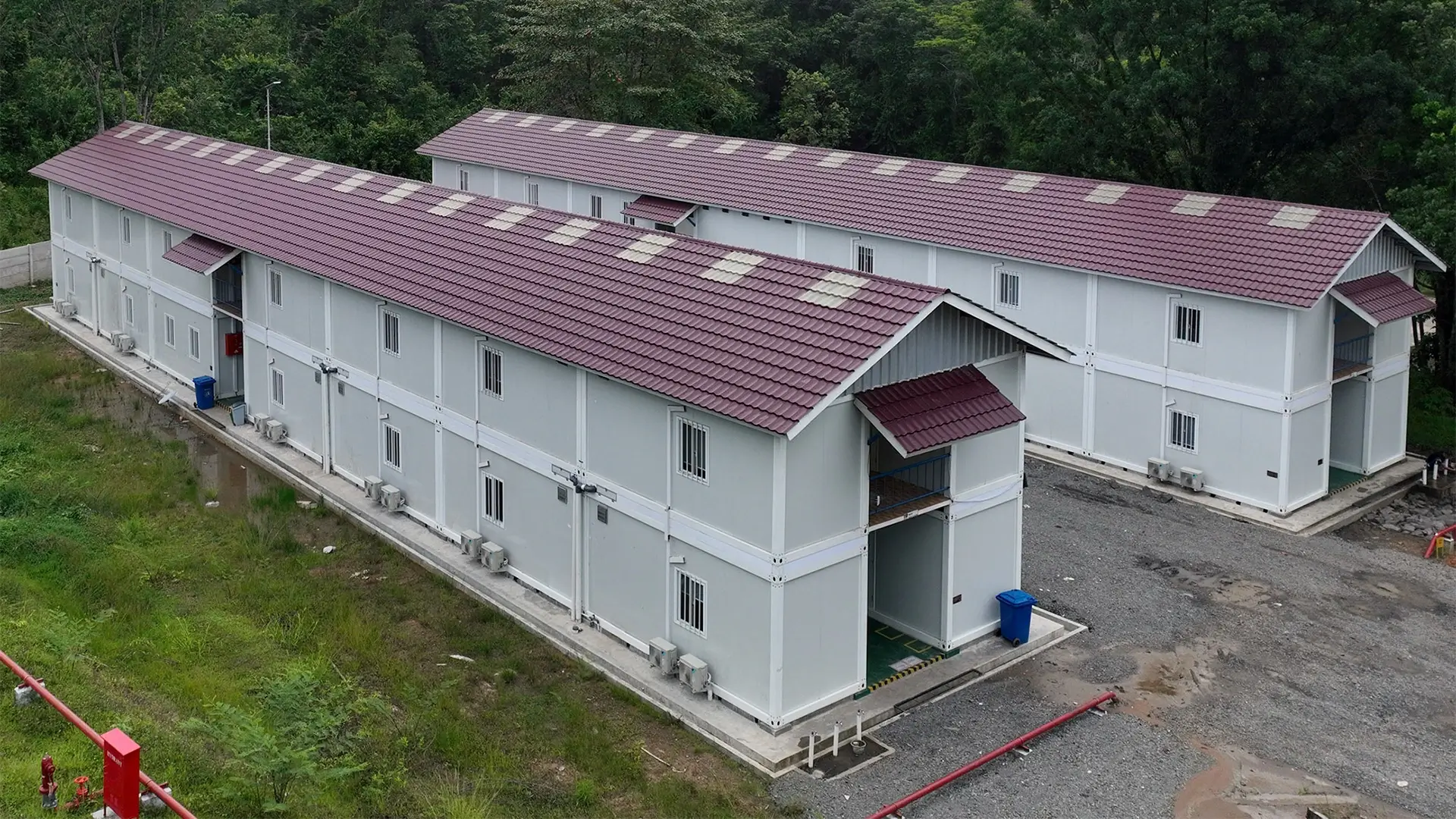
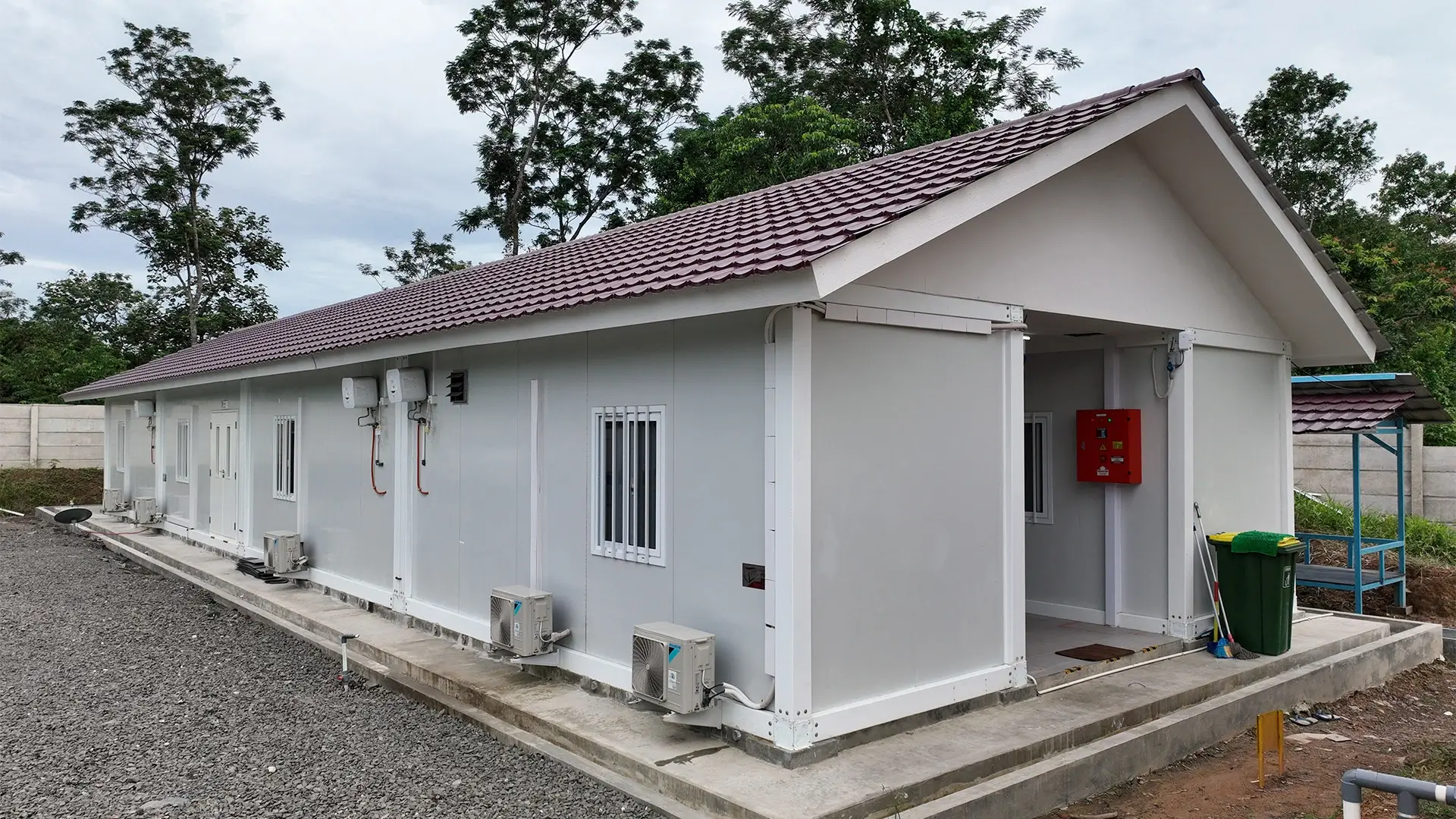

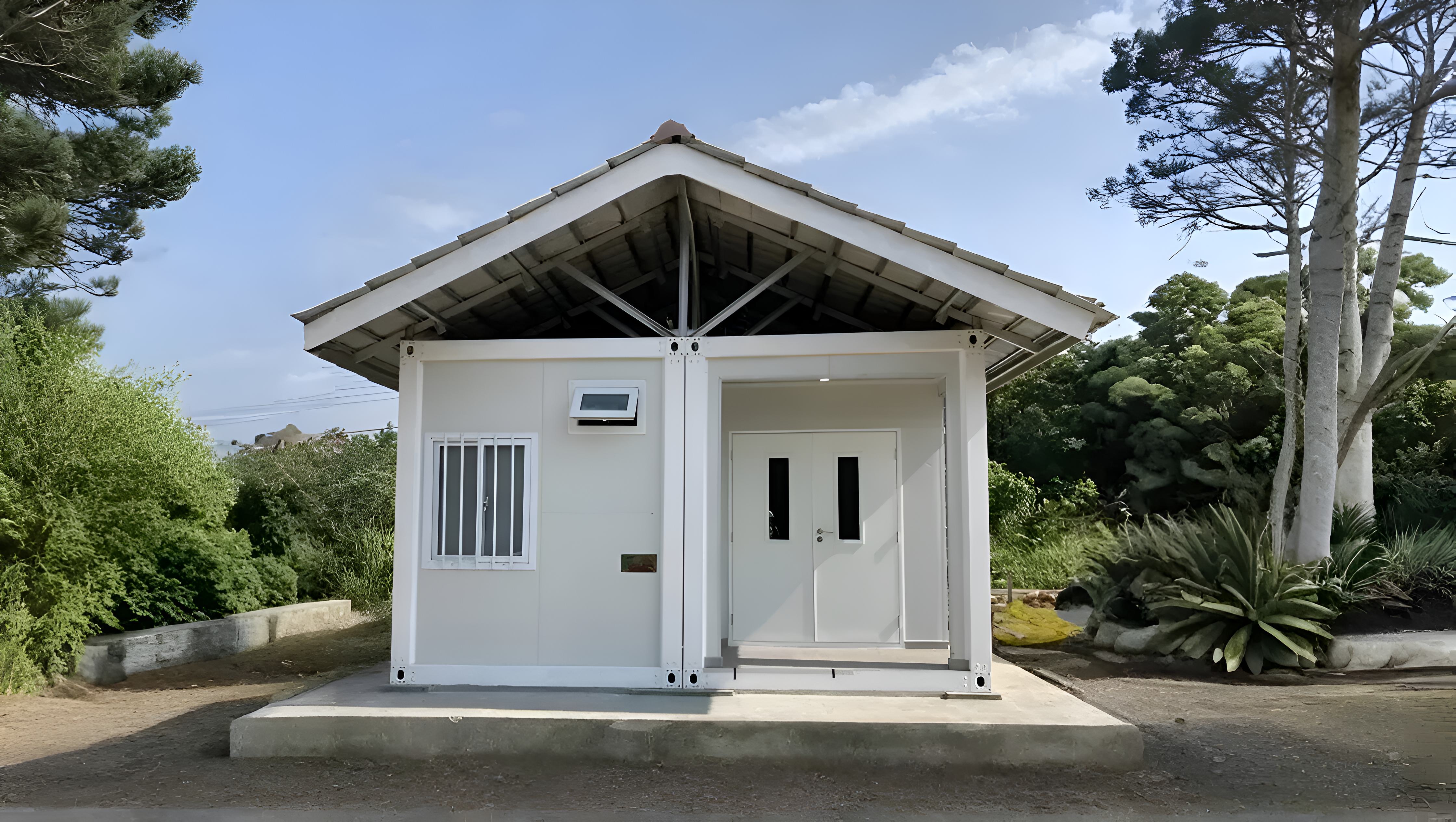
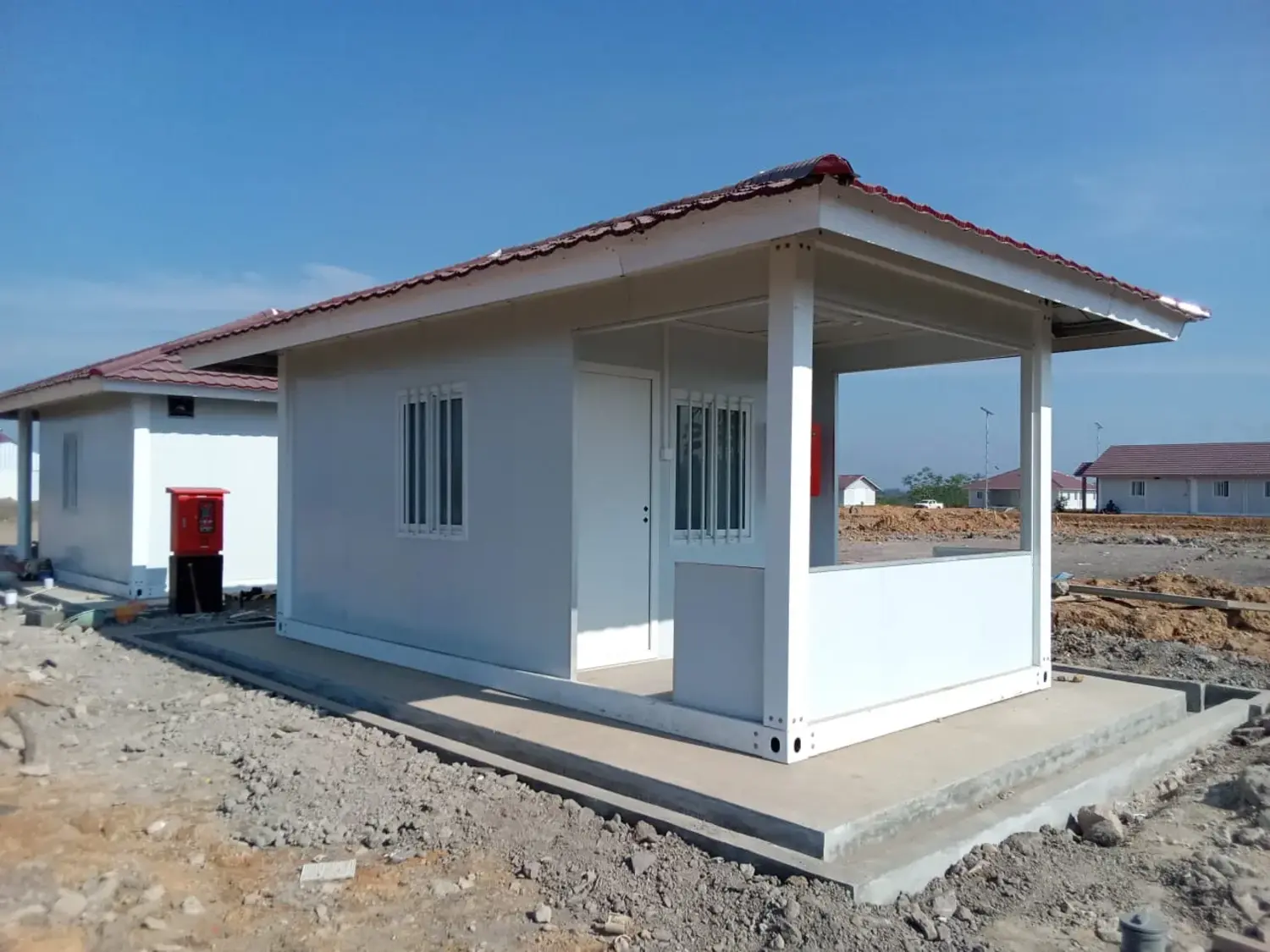





![Size of the Free Nutritious Dining Kitchen [Check the Building Too] 15 Layout Dapur Catering Rangka Baja RapidFrame 4](https://kontainerindonesia.co.id/blog/wp-content/uploads/2025/10/Layout-Dapur-Catering-Rangka-Baja-RapidFrame-4-75x75.webp)
